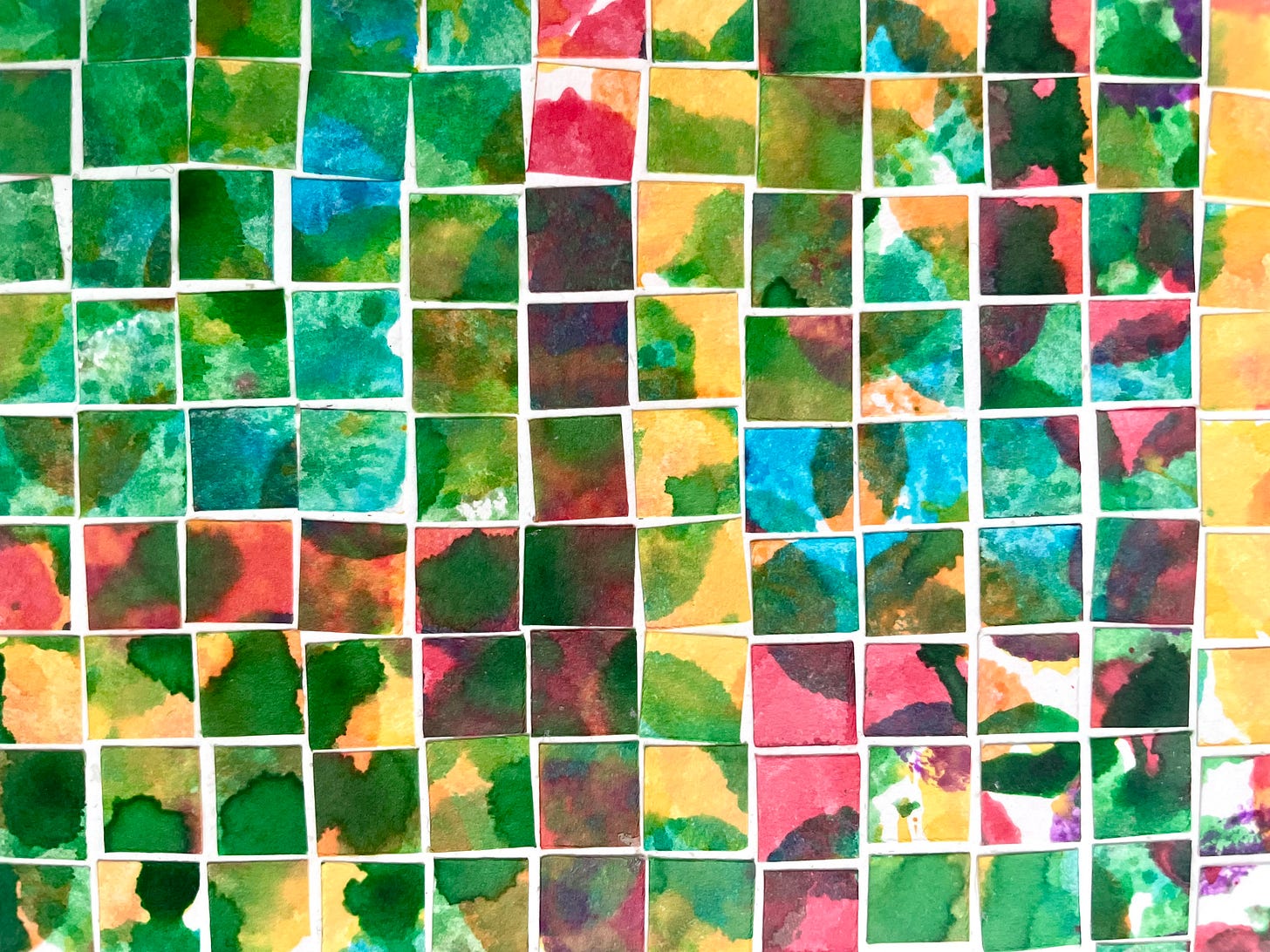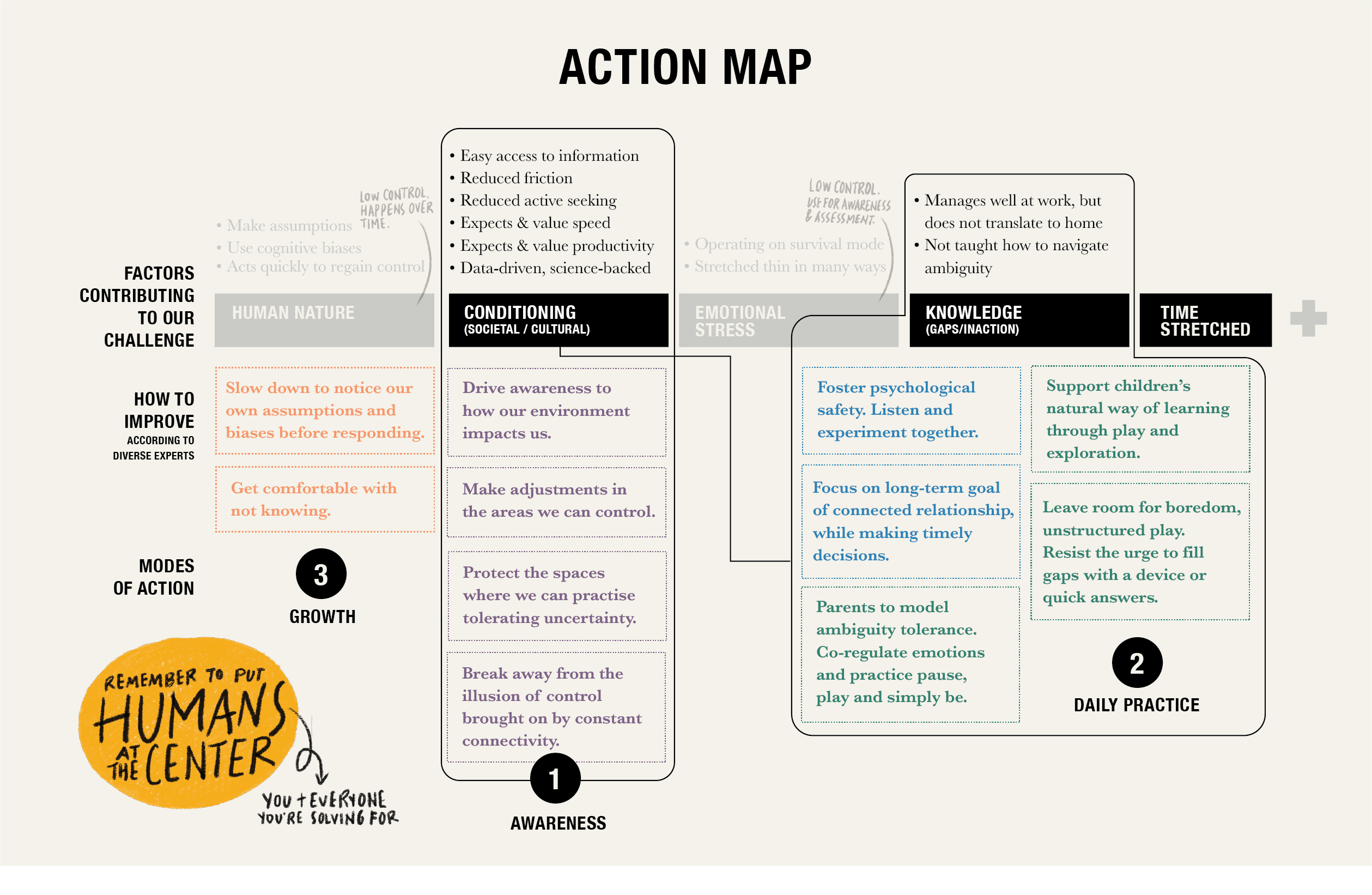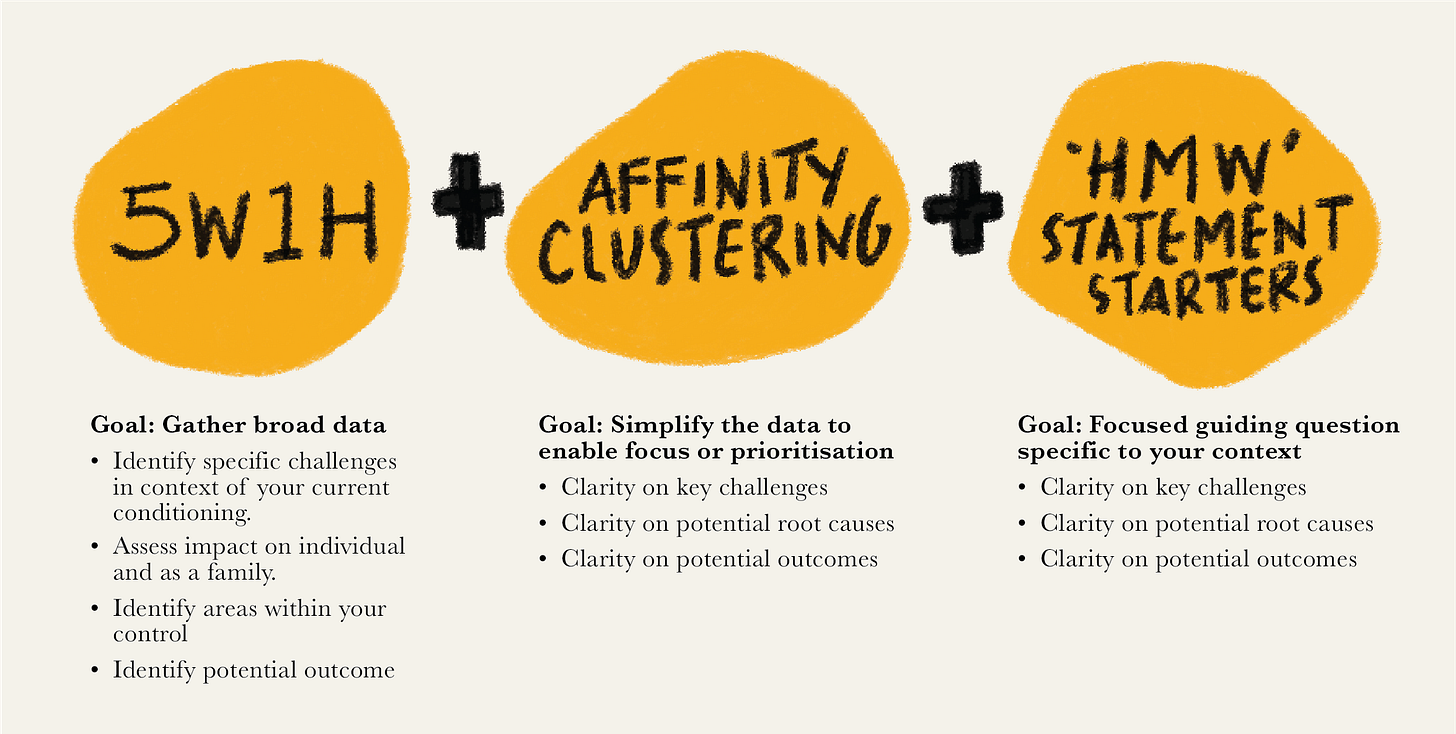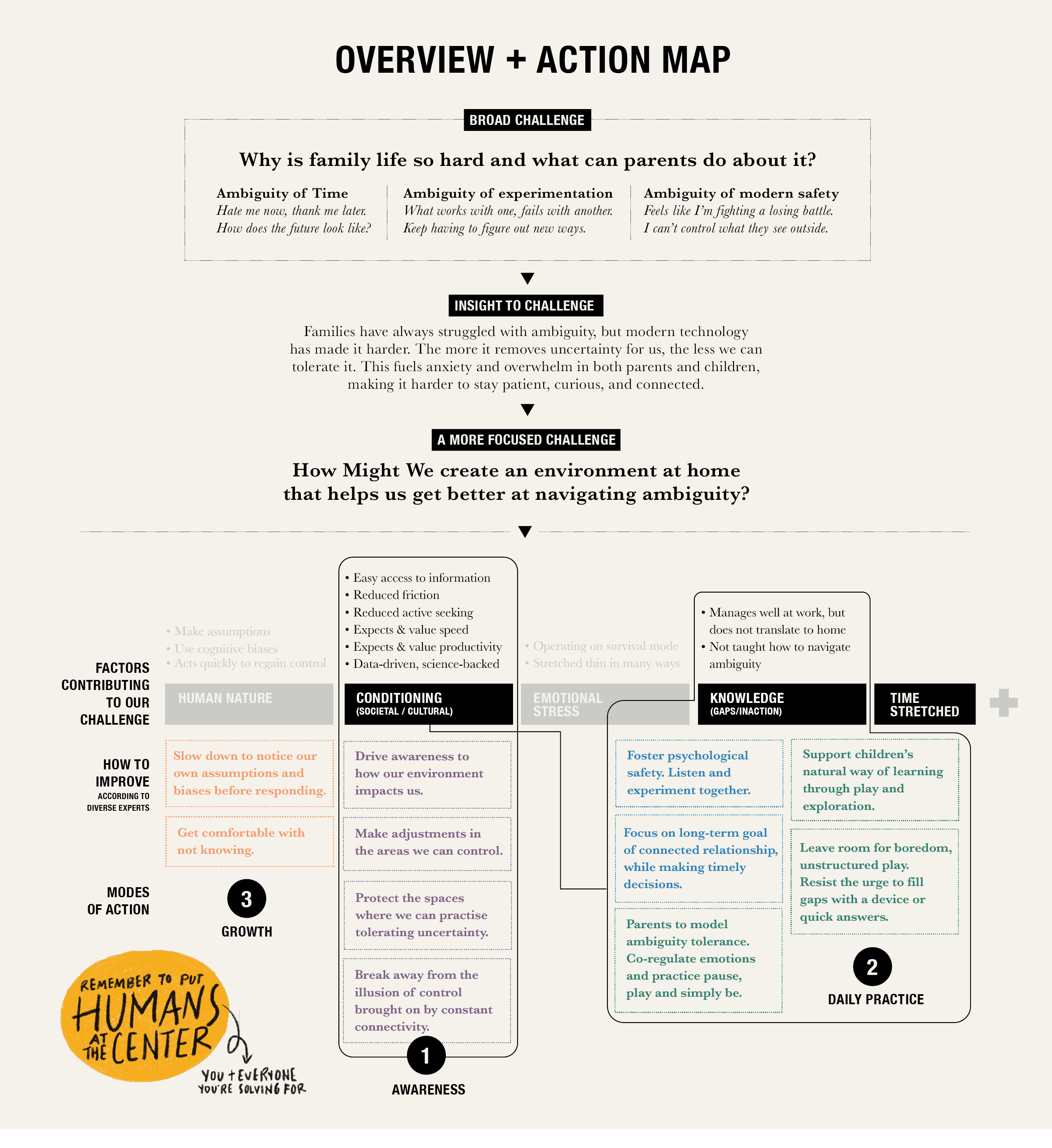How to Practice Navigating Ambiguity Together as a Family
A practical guide to help families build confidence, connection, and resilience in uncertain times.
In our earlier posts, we uncovered how many of our common challenges at home are connected to our struggle to sit with ambiguity. We looked at it through the lens of psychology, leadership, child development and modern culture. We learned how our brains, environment and habits have made not knowing so much harder than it should be.
This post turns those learnings into action as we work towards a more focused guiding question:
How Might We
create an environment at home
that helps us get better at
navigating ambiguity?
There is no one solution that fits all, but this serves as a shortcut action plan that builds on what we’ve learned to help you get started faster. All you need to do is layer in your understanding of your own family and context.
Action Map: Three Modes of Action for Navigating Ambiguity
These are suggested modes of action, not fixed steps. In most cases, it helps to begin with Awareness. But you can move between them as you go, sometimes circling back or working on several at the same time.
What matters is staying aware of where your focus is and what kind of action is needed. With practice, these modes begin to weave naturally into your family rhythm, creating small but meaningful shifts in how you navigate uncertainty and build connection together.
1. Awareness
This is where families develop a clearer picture of their unique context along with the learnings we’ve gathered. Notice the external forces shaping how you think and respond, and observe how they affect different members of your family. With a more holistic view, you’ll gain clarity on what needs attention and what action you can take.
Quick example to show how we move from a broad challenge to focused challenge specific to your family’s context.
Broad Challange: “How do we better navigate ambiguity as a family?”
Who at home struggles most/least with ambiguity?
Where does ambiguity show up for me as a parent?
How does our environment at home contribute to our difficulty with ambiguity?
>>>
We depend on devices to eliminate boredom.
Driven by our desires for convenience and ease.
The kids depend on technology to prove who is right or wrong on the spot.
Causes frequent and unnecessary conflicts.
Driven by a desire for quick resolve, a need to be ‘right’,
challenge with seeing different perspectives.
>>>
Focused Challenge (longer-term):
How Might We create opportunities to get comfortable with boredom, have friendly debates without the need to ‘prove’, and explore multiple perspectives when solving problems?
Focused Challenge (short-term & easiest to take action):
How Might We practice being comfortable with boredom?
How Might We (parents) model a healthy relationship with boredom?
Read more about the tools: 5W1H, Affinity Clustering, and “How Might We” Statement Starters.
2. Daily Practice
This is where you turn your focused challenge into specific actions. Gather ideas from everyone, test different ideas, and simplify where possible. Most families are time-stretched, so work with what you have. As you begin to see the value of awareness and daily practice, time will magically appear.
As a parent and facilitator, this is also where you may need to learn new skills. Read and practise together. Home is a great space for low-stakes learning, and kids also give the most honest feedback ;) This shared learning experience with them is a great opportunity for us to model the resilience and adaptability needed for continuous growth.
3. Growth
This is where awareness and practice begin to show results. You develop the mindsets that help you stay grounded and flexible in uncertainty. You may not always be able to get comfortable with not knowing, that’s just human. But you’ll start noticing progress in yourself and others.
Different family members will grow at different paces, but having reached this stage, you’ll likely be more empathetic and be able to better support them because you’ve just been through it yourself.
Why This Matters
When we see ambiguity not as danger but as space for learning, we begin to tame our fears of uncertainty and move forward with confidence. By combining awareness of ourselves and our environment with daily practice, we learn to experiment with intention rather than throwing darts in the dark and leaving things to chance.
There is definitely value in the occasional dart in the dark. It keeps things fun and reminds us to stay open to surprise. But when we’re strategic, we know when to explore freely and when to focus, that gives us a sense of control. Which in turn helps us to better cope with ambiguity.
A Note on Using Technology
Technology can support this process in simple, practical ways. Use it to help you get started in areas that feel more challenging for you. For example, if self-awareness is difficult, try using a listening device to notice your tone and words at home. From there, you can identify your thoughts and emotions. Or use AI to explore perspectives and act as a brainstorming partner for new ideas.
These tools can be helpful in the short term, but it is important to stay aware of how easily they can turn into dependencies. Remember that at work, we use technology for efficiency, and that’s awesome. At home, we are building connection with humans. If we rely on technology to reveal insights about our ourselves or to create solutions to our relationship problems, we are in trouble.
Choose intentionally.
Conclusion
This post gives you the shortcut to include navigating ambiguity as a part of your family culture. Across this three-part series, we’ve used the design process and tools to help you understand the challenge, identified one of the root causes and find the actions we can take to move forward.
What’s left is the most rewarding part. Understanding yourself and the people you love, creating together, and experimenting as a family. Isn’t that what family is all about?
Related posts
Introduction: Human-centered Design for Families, Why it matters at home
Read about the tools mentioned here: 5W1H, Affinity Clustering, and “How Might We” Statement Starters.






